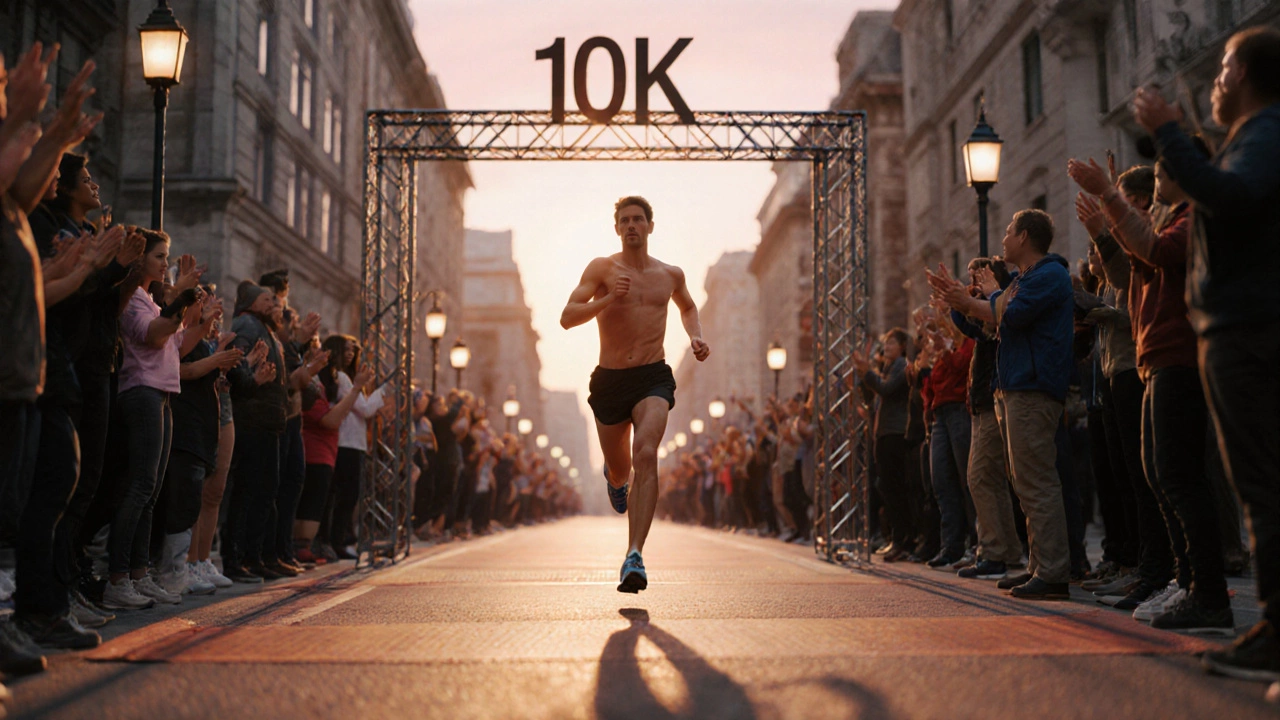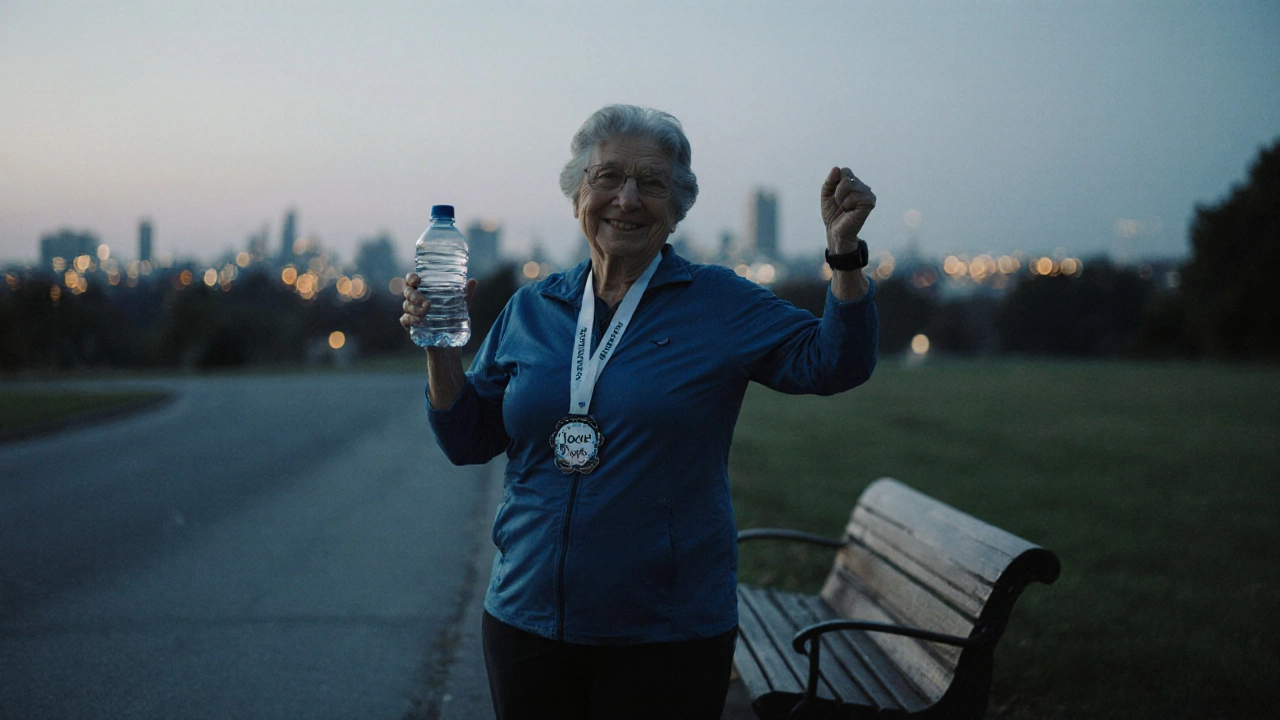Is a 10K Run Really Impressive? What the Numbers Reveal

10K Performance Analyzer
Your Performance Analysis
People love to brag about their recent impressive 10k finish, but what does "impressive" really mean? Is it just a personal win, or does it stand out on a broader scale? This article breaks down the stats, age‑graded scores, and training factors that tell you whether a 10K time truly turns heads.
10K race is a road running event covering 10 kilometers (6.21 miles) that mixes speed and stamina. Because it sits between the short 5K sprint and the half‑marathon distance, a 10K is often used as a benchmark for runners who are serious about stepping up to longer events.
What the data says about typical finish times
Finishing a 10K in under 40 minutes puts you in the top 5 % of recreational runners worldwide, according to the 2024 Global Running Survey. Elite men hover around 27‑28 minutes, while elite women cruise by at 30‑31 minutes. The average club runner finishes between 55 and 70 minutes.
| Category | Men | Women |
|---|---|---|
| World record | 26.11 | 29.01 |
| Elite professional | 27‑28 | 30‑31 |
| Competitive club | 38‑42 | 42‑46 |
| Average recreational | 55‑65 | 60‑70 |
| First‑time racer | 70‑85 | 80‑95 |
How to gauge impressiveness beyond raw minutes
Raw time tells only part of the story. Age‑graded tables adjust your finish time against world‑class performances for your age and gender. A 45‑year‑old man who runs 45 minutes scores about 84 % age‑graded, which is considered a strong performance. The same finish time for a 20‑year‑old would rank much lower.
Another useful metric is personal improvement. Cutting even five minutes off a personal best after a structured training block signals a significant physiological boost.

Training variables that drive faster 10K times
VO2 max is a measure of the maximum amount of oxygen your body can use during intense exercise. Higher VO2 max values allow you to sustain faster paces for longer. Structured interval training-such as 5×1 km repeats at race pace with short jog recoveries-has been shown to raise VO2 max by 5‑10 % in 8‑12 weeks.
Improving the lactic threshold helps you run faster before fatigue sets in. Tempo runs at 85‑90 % of max heart rate push this threshold upward.
A well‑rounded training plan includes weekly mileage, speed work, long runs, and recovery days. Most 10K‑focused plans recommend 30‑45 km per week for intermediate runners, with a mix of 2-3 quality sessions.
Common misconceptions about a “good” 10K
Many assume that finishing under 40 minutes automatically makes a runner elite. In reality, elite status requires sub‑30‑minute times for men and sub‑33‑minute for women, plus consistent competition at the national level.
Another myth is that a fast 10K guarantees a fast marathon. While both rely on aerobic capacity, marathon pacing also demands fuel strategy, mental endurance, and a different training emphasis. Some runners excel at 10K but struggle beyond 20 km.

Tips to make your next 10K truly impressive
- Run a mixed‑pace workout at least once a week. Example: 2 km easy, 3 km at 10K goal pace, 2 km easy.
- Include hill repeats. Short, steep climbs boost leg strength and improve running economy.
- Track heart rate. Aim for 85‑90 % of max during tempo runs; this keeps you in the right intensity zone.
- Practice race‑day nutrition. A small carb gel 15 minutes before the start can prevent early‑stage fatigue.
- Do a taper two weeks before race day. Cut mileage by 20‑30 % while keeping intensity high.
When a 10K is impressive in context
If you’re a beginner over 50, a sub‑50‑minute finish is often celebrated as a milestone. For college athletes, breaking 30 minutes may attract scholarship attention. For seasoned club runners, a new personal record (PR) that moves you into the top 10 % of local race results feels impressive.
In every case, compare your time to personal goals, age‑graded scores, and the competitive field you’re racing against. That framework turns a raw number into a meaningful achievement.
What is a “good” 10K time for a recreational runner?
For most recreational athletes, finishing between 55 and 70 minutes is considered solid. Anything under 45 minutes usually places you in the top 20 % of local results.
How does age‑grading work?
Age‑grading compares your finish time to the world record for your age and gender, producing a percentage score. Scores above 80 % are flagged as strong; above 90 % are world‑class.
Can I use a 10K as a predictor for marathon success?
A fast 10K shows good speed and aerobic capacity, but marathon performance also depends on fueling, long‑run endurance, and mental stamina. Use the 10K as one data point, not the sole predictor.
How often should I do interval training for 10K improvements?
Two quality interval sessions per week-such as 5×1 km repeats or 8×400 m sprints-are optimal for most runners. Balance them with easy runs and a weekly long run.
What gear helps shave minutes off a 10K?
Lightweight shoes with responsive cushioning (e.g., carbon‑plate models), a reliable heart‑rate monitor for pacing, and moisture‑wicking apparel keep you comfortable and efficient on race day.
